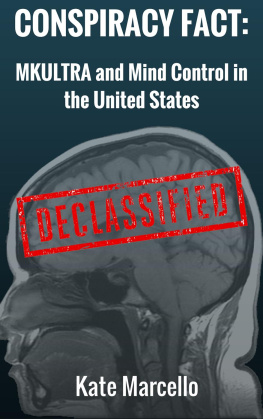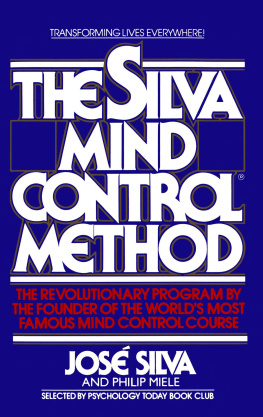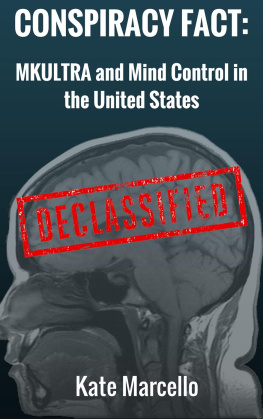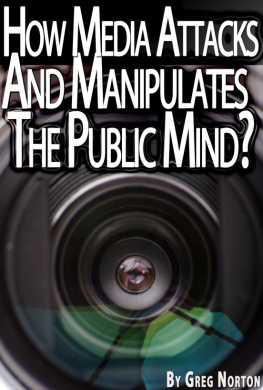Your Thoughts Are Not Your Own
Mind Control, Mass Manipulation and Perception Management
By Neil Sanders
Acknowledgements
With hear tfelt thanks to Zoe Cunningham, without whose tireless efforts and skilful input this project would not have been possible. Thank you for all your support and help along the way. X
Thanks to Val Sanders, for everything, all the encouragement andeverything.
Thanks to Richard D. Hall of RichPlanet.TV. Without your encouragement this would never have happened.
Cover artwork by Mark Cox aka Max Rock, please visit maxrockart.blogspot.co.uk/
Skilfully and beautifully edited by the skilful and beautiful Zoe Cunningham.
About the author
Neil is from Nottingham, holds an MA in Film Studies, studied Psychology and Media Production for his BA Honours and is a qualified hypnotherapist.
www.NeilSandersMindControl.com
Contact: Enquiries@neilsandersmindcontrol.com
st Edition: Published by NumberSixDance Publishing UK: 2012. 2nd run limited edition. Printed in Nottingham, UK. 2013
Contents
An introduction to mind control, page 5
Chapt er one: Foundations of research, page 12
Chapter two: Communists, Nazis and the CIA, page 28
Chapter three: LSD and MK ULTRA, page 46
Chapter four: Civilian testing, page 66
Chapter five: Control by hypnosis , page 83
Chapter six : Annihilating the mind, page 104
Chapter seven : Shocking treatment in the U.K., page 120
Chapter eight: Victims, page 138
Chapter nine: Presidential models, page 148
Chap ter ten: Children and the elite, page 153
Chapter eleven: Military revelations , page 166
Chapter twelve: Manchurian Candidates? Page 169
Chapter thirteen: School shootings , page 188
Chapter fourteen: Soft kill, slow kill or silent kill , page 201
Chapter fifteen: Synthetic telepathy , page 219
Chapt er sixteen: Weapons of the mind, page 224
Chapter seventeen: Government-sponsored terror , Page 253
Chapter eighteen: Phoenix rises , page 262
In conclusion, page 291
An i ntroduction to mind control
Depictions of mind control in popular culture have actually been wide and varied. From The Cabinet of Dr Caligari to the tales of Svengali and the book and films of The Manchurian Candidate , the theme of robotically controlled assassins and hypnotically controlled slaves is in fact a common plot point. Even comedies such as The Naked Gun and later Zoolander use this theme of assassins who do not know they are assassins; one could even argue that The Pied Piper employed mind manipulation techniques in order to steal away the children of his clients.
We are also shown in many films and media presentations the concept of multiple personalities in characters; this plot device has in fact become old hat now in Hollywood through overuse, the audience is no longer shocked to find that the main protagonist is in actuality themselves, the suspect they are looking for, unknown to their true personality. A separate person has manifest within the mind of the protagonist, completely detached in actions and memory to the original core personality. This schism is usually shown as the result of some event or trauma so powerful as to literally shatter the mind of the protagonist into distinct personalities. This plot point is perhaps more accurate than most people realise.
This manipulation of the mind is actually far from science fiction and has been well documented in primary sources such as declassified documents, court hearings, exposs in the media by those involved boasting at their prowess and by insider whistle-blowers. The subject has also been discussed by many researchers in a secondary sense; notable inclusions are the fantastic and detailed work of Jim Keith and Dr. Colin Ross.
Many of the books in the public eye are littered with disinformation, usually suggesting there is little actual success in the field of mind manipulation. I will draw together the evidence to show the scope of these projects and prove that mind control, in all its forms, was and is used to control us on numerous levels.
What exactly do we mean by mind control? We are talking about the ability to control a persons thoughts and actions, in order to have them do the bidding of their programmers against their own will and in some cases, against their own moral code. In this realm, we are speaking of robotically controlled individuals, slaves to the whims of their masters. This can not only apply to the individual in programming of personal thought and action but can also be utilised in the arena of mass manipulation or mass programming, affecting large sections of the public. This can run the gamut from advertising techniques that manipulate our subconscious without our knowledge, to lies by the media and full military propaganda designed to shape the ideology of a nation. Indeed, the application of individual mind control experiments would instantly fail were it not for the mass manipulation techniques that tell the public; this sort of technique is not possible, it is in the arena of science fiction or espionage thrillers. What I intend to prove is that this is far from science fiction.
The fact that U.S., U.K., Chinese and Russian governments were involved in varying levels of individual and mass mind control programmes is not even denied, rather it is often passed over with the explanation that, it was a different time, the cold war made us paranoid and justified our actions and of course the classic, we never achieved our goals in any meaningful sense anyway . In fact we can even see the propaganda posters from Nazi Germany or Communist Russia and in our wise Western way, decode them for the manipulation they are, without applying that same critical analysis to the images we ourselves are presented with every day. We seem to forget that the aim of propaganda is to disguise itself as fact.
The U.S. mind control programmes started in April 1950 with the beginning of the fabled Project BLUEBIRD. The official reason for any U.S. involvement with the dark arts of mind control is that it was a response to Communist methods used against American G.I.s in the Korean War, fearing that Americans were being brainwashed into confessing and defecting to the Communist regime. However, as the start of this programme predates the cited conflict, we can see clearly that this explanation too is manipulative propaganda directed against the public to manage their perceptions of the world.
Project CHATTER was a United States Navy programme beginning in the autumn of 1947, primarily involved in the testing of different drugs in interrogation scenarios and collecting results on their usefulness. The programme was led by Dr. Charles Savage of the Naval Medical Research Institute , Bethesda, Maryland and ran from 1947 to 1953. The doctors involved used both natural and synthetic concoctions on their test subjects in order to achieve their required results. Project CHATTER involved experimentation on animals and humans alike, with large doses of scopolamine, mescaline and various other potions and narcotics used in interrogation scenarios. This project also predated the Korean War.
Project ARTICHOKE was the continuation of BLUEBIRD, officially beginning on 20 August 1951, and run by the CIA's Office of Scientific Intelligence . The desired results of the project were charted in a memo , dated January 1952, that stated,
"Can we get control of an individual to the point where he will do our bidding against his will and even against fundamental laws of nature, such as self-preservation?"
The project studied hypnosis , forced morphine and heroin addiction , followed by subsequent forced withdrawal and the use of various other chemicals, among other methods, in order to produce amnesia and other vulnerable states in subjects, ostensibly for interrogation purposes. A CIA Document, dated 26 April 1952, stated that those employed in Artichoke interrogations,
Next page








